PNNL @ ACS Spring 2022
Scientists at PNNL will be presenting the latest research in chemistry at the in-person and virtual American Chemical Society (ACS) Spring 2022 meeting.
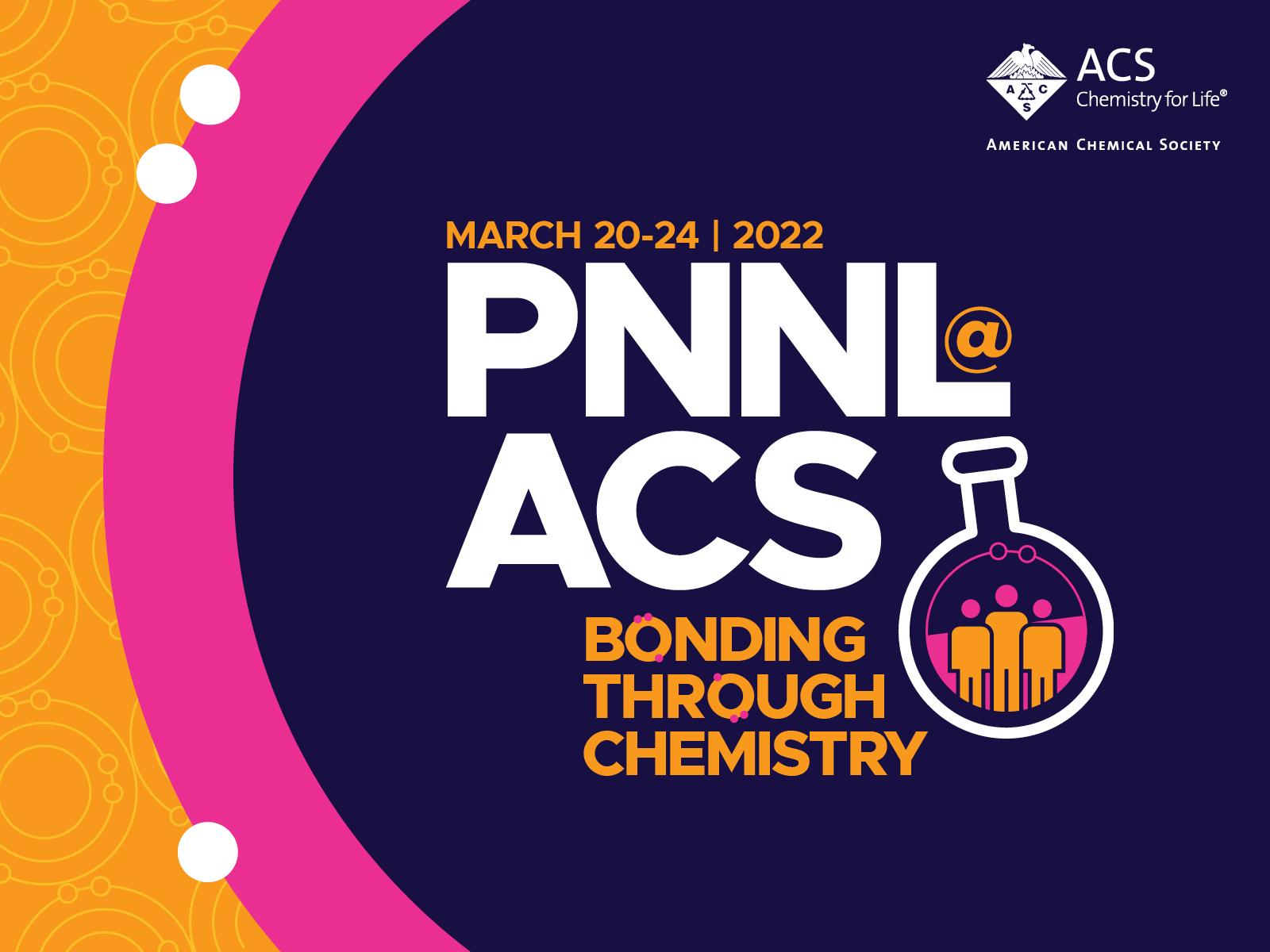
Join PNNL at ACS Spring 2022
(Image by American Chemical Society and Melanie Hess-Robinson | Pacific Northwest National Laboratory)
The ACS Spring 2022 conference theme, "Bonding Through Chemistry," features a mix of live and on-demand presentations, industry thought-leader sessions, and posters. The full program is planned for March 20 – 24 in San Diego, CA.
More than 140 researchers from Pacific Northwest National Laboratory (PNNL) will be participating in this year’s event. Below is a list of highlighted presentations by research area. A schedule-at-a-glance and the complete meeting program can be found on the ACS Spring 2022 event website.
A few key symposia sessions include:
- ACS Award in Organometallic Chemistry: Symposium in Honor of Morris Bullock. Join us in celebrating the career of Laboratory Fellow Morris Bullock, the recipient of this year’s ACS Award in Organometallic Chemistry. Symposium organized by Aaron Appel. (March 20 – 22)
- Energy-Efficient Chemical Separations Through 21st Century Scientific Capabilities. A multi-day symposium organized by Computational Scientist Vanda Glezakou, Chemists David Heldebrant and Grant Johnson, and Chemical Engineer Venky Prabhakaran. (March 21 – 24)
- Energy Storage in Chemical Bonds: From Theory to Practice. Symposium organized by Chemists Thomas Autrey and Ba Tran. (March 23 – 24)
We hope to see you there.
If you’re a chemist interested in working at PNNL, check out our current openings:
Selected PNNL Presentations by Research Area
HYDROGEN
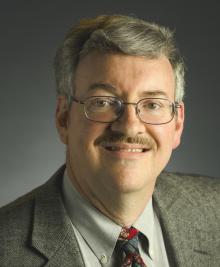
Making and breaking metal hydride bonds
ACS National Awards plenary session, Division of Inorganic Chemistry
Monday, March 21, 9:15 a.m. – 9:50 a.m. PST
Presenter: Morris Bullock, recipient of the 2022 ACS Award in Organometallic Chemistry
Summary: Metal hydrides are crucial intermediates in diverse catalytic reactions required for energy conversions and the production of industrial chemicals. This talk presents research that emphasizes fundamental studies of Earth-abundant metal complexes to identify and use new reactivity patterns, particularly in electrocatalysis. READ MORE.

Exploring detailed reaction pathways for hydrogen storage with borohydrides using density-functional theory calculations
Energy Storage in Chemical Bonds symposium
Wednesday, March 23, 3:30 p.m. – 3:55 p.m. PST
Presenter: Samantha Johnson
PNNL Contributors: Jonathan DeMaria, Bojana Ginovska, Thomas Autrey
Summary: Boron hydrides have been extensively studied as hydrogen storage materials; however, there are still few methodical mechanistic studies for the entire reaction landscape. This study presents computational work using density-functional theory to evaluate the thermodynamics of pathways to release hydrogen and form borohydride clusters from simple starting ions. READ MORE.
CATALYSIS
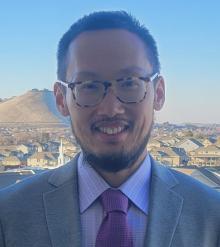
Highly efficient and selective hydrogenolysis of polyolefin plastics over near-atomically-dispersed cationic Ru supported on CeO2
Tuesday, March 22, 2:00 p.m. – 2:20 p.m. PST
Presenter: Linxiao Chen
PNNL Contributors: Laura Meyer, Xavier Pereira Hernandez, Libor Kovarik, Mark Engelhard, Oliver Gutiérrez, Janos Szanyi
Summary: While plastics play important roles in a wide range of industries, non-degradable polyolefin plastic wastes pose severe environmental threats. This work demonstrates the remarkable catalytic performance of highly disordered, sub-nanometer, cationic ruthenium species on a cerium dioxide support for polyolefin hydrogenolysis, opening opportunities to develop new catalysts for plastic upcycling. READ MORE.
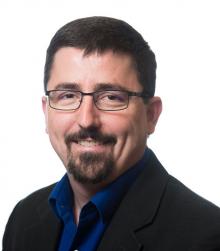
Thermodynamics for the design of molecular catalysts
ACS Award in Organometallic Chemistry symposium
Wednesday, March 23, 2:00 p.m. – 2:25 p.m. PST
Presenter: Aaron Appel
Summary: Catalysts for forming and using fuels can be designed using fundamental thermodynamic parameters. This presentation focuses on using solvent as a design parameter to tune reactivity and enable hydrogenation of carbon dioxide. READ MORE.
BATTERIES
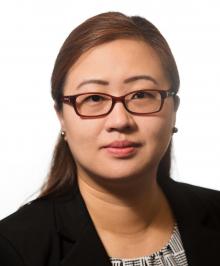
Single crystal Ni-rich cathodes for advanced Li-ion batteries
Monday, March 21, 2:20 p.m. – 3:00 p.m. PST
Presenter: Jie Xiao
Summary: Nickel (Ni)-rich cathodes are a promising class of materials for next-generation lithium-ion batteries. This talk will cover both research on fundamental understanding and applications of single crystal Ni-rich cathodes, ranging from deep structural studies to large-scale electrode processing of the moisture sensitive cathodes. READ MORE.
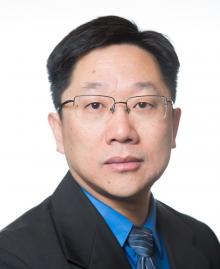
Reversible ketone hydrogenation and dehydrogenation for aqueous organic redox flow batteries
Tuesday, March 22, 10:00 a.m. – 10:40 a.m. PST
Presenter: Wei Wang
Summary: Water-soluble organic-based molecules are promising active materials for the redox flow batteries needed for large-scale energy storage. This talk describes how molecularly engineered fluorenone derivatives can reversibly react at room temperature to stably cycle in a flow battery. READ MORE.
QUANTUM
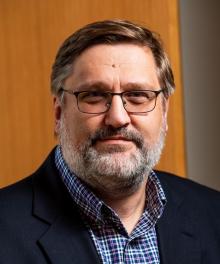
Downfolding coupled-cluster formulations: hybrid quantum-classical computing perspective
Monday, March 21, 11:50 a.m. – 12:20 p.m. PST
Presenter: Karol Kowalski
PNNL Contributors: Nicholas Bauman, Bo Peng
Summary: Researchers need novel and predictive modeling tools to overcome the computational barriers that arise when modeling chemical transformations involve complex quantum effects. This talk describes rigorous, many-body coupled-cluster downfolding techniques, which can efficiently represent quantum chemical problems and be integrated with recently developed quantum algorithms and hardware. READ MORE.

Influence of substrate and intermolecular interactions on the vibrations of supported polyoxometalate spin qubits
Thursday, March 24, 3:40 p.m. – 4:00 p.m. PST
Presenter: Oliva Primera-Pedrozo
PNNL Contributors: Brian O'Callahan, Difan Zhang, Shuai Tan, Xue-Bin Wang, Wenjin Cao, Eric Baxter, Patrick El-Khoury, Venky Prabhakaran, Vanda Glezakou, Grant Johnson
Summary: Polyoxometalates that contain magnetic atoms are candidate molecular qubits for quantum computing applications. In this work, researchers synthesized polyoxometalates with different numbers of vanadium atoms, softly landed mass-selected polyoxometalates on a range of substrates, and used a range of techniques to provide fundamental insights into how polyoxometalates behave on surfaces. READ MORE.
SEPARATIONS
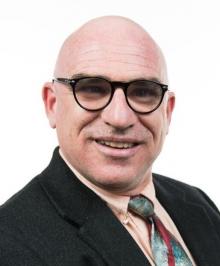
Making an inorganic analogue of a cell for direct air CO2 capture
Energy-Efficient Chemical Separations Through 21st Century Scientific Capabilities symposium
Tuesday, March 22, 9:20 a.m. – 9:50 a.m. PST
Presenter: Roger Rousseau
PNNL Contributors: David Heldebrant, Aaron Appel, Eric Wiedner, Asanga Padmaperuma, Xiao-Ying Yu, David Hoyt, Eric Walter, Karl Mueller, Vanda Glezakou
Summary: Direct air capture would allow humans to remove carbon dioxide from the air after its production, but this requires separating a complex mixture of gases. This work explores approaches to enable selective and kinetically efficient uptake under the small thermodynamic driving force created by low partial pressures of carbon dioxide in the atmosphere. READ MORE.
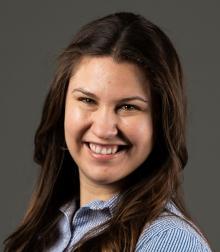
Computational screening of cycloaddition reactions for the reactive separation of CO2
Energy-Efficient Chemical Separations Through 21st Century Scientific Capabilities symposium
Wednesday, March 23, 4:05 p.m. – 4:30 p.m. PST
Presenter: Sarah Allec
PNNL Contributors: Loukas Kollias, Melissa Manetsch, Difan Zhang, Jothi Kothandaraman, Deepika Malhotra, David Heldebrant
Summary: Coupling separation and conversion processes can increase the efficiency of capturing carbon dioxide and transforming it into useful molecules. This research demonstrates a synergistic cycle of quantum chemical calculations, machine learning techniques, and experimental validation that enable the identification of how a given carbon-capture solvent will act to promote cycloadditions of carbon dioxide to dienes. READ MORE.
ENERGY FRONTIER RESEARCH CENTERS
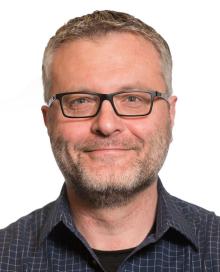
Short- and long-range regulation of electrocatalytic oxygen reduction
Tuesday, March 22, 5:10 p.m. – 5:35 p.m. PST
ACS Award in Organometallic Chemistry symposium
Presenter: Simone Raugei, Center for Molecular Electrocatalysis
PNNL Contributors: Samantha Johnson, Peter Rice
Summary: Sustainable fuel technologies need effective and inexpensive catalytic processes to interconvert electrical energy and chemical bonds. This work presents multiple efforts to develop efficient electrocatalysts that perform the oxygen reduction reaction. READ MORE.

Properties of water in far-from-equilibrium environments
Wednesday, March 23, 4:30 p.m. – 4:45 p.m. PST
Presenter: Carolyn Pearce, Interfacial Dynamics in Radioactive Environments and Materials (IDREAM)
PNNL Contributors: Emily Nienhuis-Marcial, Trent Graham, Eric Walter, Xin Zhang, Gregory Schenter, Kevin Rosso, Zheming Wang, Aurora Clark (Washington State University Joint Appointee)
Summary: Complex environments characterized by extremes in alkalinity, low-water activity, and ionizing radiation alter the behavior of water. This work, supported by the IDREAM Energy Frontier Research Center, explores how to apply experimental and computational approaches to probe how water structure and dynamics are constrained under complex, far-from-equilibrium conditions. READ MORE.